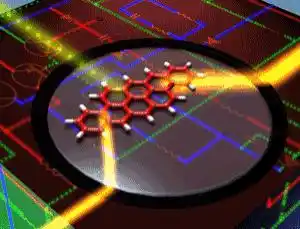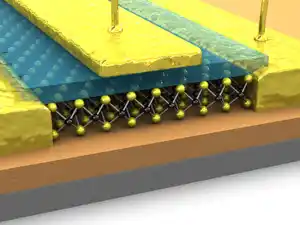افشین رشید
اُستادیار ؛ عضو هیات علمی دانشگاه آزاد اسلامی واحد علوم و تحقیقات تهران
595 یادداشت منتشر شدهNanotransistors Proliferation including Advanced Heterogeneous and Homogeneous Processes

Note: In the methods of nanotransistors and nanotubes propagation by synthesis of carbon nanotubes based on chemical catalytic vapor deposition (CCVD), the decomposition of the carbon source on small metal particles or clusters as a catalyst is involved. This method of nanotransistors propagation includes heterogeneous and homogeneous processes. The metals used for these reactions are transition metals, such as iron, cobalt, nickel. Compared to arc discharge and laser ablation, carbon nanotubes are generally formed at a lower temperature of about 011 to 0111 degrees.
Generally, this method has higher selectivity for the production of multi-walled carbon nanotubes. Both homogeneous and heterogeneous processes are very sensitive to the nature and structure of the catalyst used, as well as the operating conditions. The carbon nanotubes produced by this method are longer (several tens to hundreds of micrometers) and have more defects than those produced by the electric arc method. The higher defects of the nanotubes are due to the use of lower temperatures compared to the electric arc method, which does not allow any structural rearrangement.

When the carbon atoms in the catalyst reach a supersaturated level, the precipitation and growth of carbon nanotubes begins. If the interaction of the catalyst with the substrate is weak (the metal with the substrate has an acute contact angle), the nanotube is at the bottom of the catalyst (tipgrowth) , and if the interaction of the catalyst with the substrate is strong, the metal with the substrate has an open contact angle. The nanotube grows above the catalyst (growth base). In the first case, it is possible to produce a nanotube with one open end. The physical shape of the deposited carbon (single-walled, multi-walled, amorphous carbon nanotubes and a graphite layer covering the catalyst nanoparticles) depends on many factors such as the size of the catalyst particles and the deposition rate. When the deposition rate is equal to or less than the carbon diffusion rate, a graphite layer is formed around the catalytic nanoparticles. When the deposition rate is greater than the carbon diffusion rate, a carbon nanotube is formed. The size of the catalytic nanoparticles plays an important role in the growth of nanotubes. Generally, small catalytic nanoparticles (less than 100 nm) are active for the nucleation and growth of carbon nanotubes. If the particle size is in the range of one nanometer, a single-walled nanotube is formed. Catalytic nanoparticles with a size of 0.1 to 51 nm lead to the growth of multi-walled nanotubes. Catalytic nanoparticles with a size larger than 51 nm are also coated with amorphous graphite sheets. And the manufacture of chips and nanotransistors is an example of the effect of the crystalline structure of the catalyst on the shape and structure of the carbon nanofibers.
Conclusion :
In the methods of nanotransistors and nanotubes propagation by synthesis of carbon nanotubes based on chemical catalytic vapor deposition (CCVD) involves the decomposition of a carbon source on small metal particles or clusters as a catalyst. This method of nanotransistors propagation includes heterogeneous and homogeneous processes. The metals used for these reactions are transition metals, such as iron, cobalt, nickel. Compared to arc discharge and laser ablation, carbon nanotubes are generally formed at a lower temperature of about 011 to 0111 degrees.